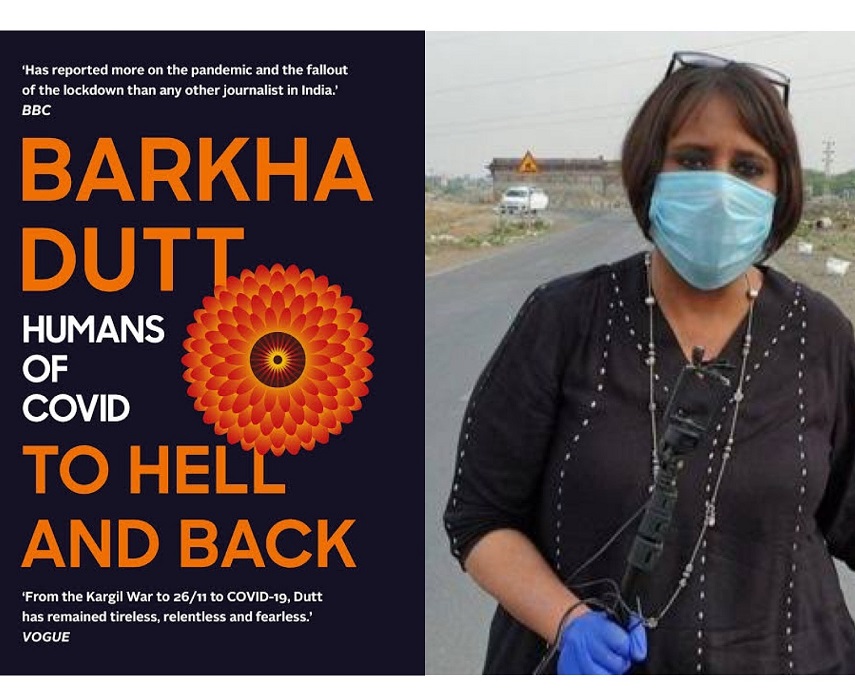
Excerpts from ‘To Hell and Back: Humans of Covid’ by Barkha Dutt published by Juggernaut Books (2022)
‘I am more scared of the living than the dead. The bodies – before they are Hindu or Muslim – they are human.’ At any other time, this would have been a truism, a self-evident do-gooder statement that may have even been overlooked for its obvious good manners. But Indian public discourse had already been coarsened by a communal, poisonous conversation around the role of the Tablighi Jamaat, an orthodox Sunni sect, as a super-spreader. The proselytizing organization, which urged believers to return to Islam as practised in the age of the Prophet, was spread across eighty countries with its markaz or centre in Delhi. In early March 2020, roughly ten days before India was offi cially locked down, a religious congregation was organized in the capital’s Nizamuddin area, a Muslim-dominated neighbourhood made up of untidy, byzantine lanes where fourteenth-century domes built from red sandstone and inlaid marble shared space with overcrowded slums, pavement dwellers and child beggars. An advisory from the Delhi government had warned against gatherings of more than 200 people but did not specifically ban religious events. Hundreds of foreigners had also entered India from COVID hotspots like Indonesia and Malaysia to attend the congregation held between 13 and 15 March. A few thousand pilgrims attended the event. Thereafter, the oblivious Tablighis fanned out in diff erent directions of India, carrying the virus with them. It was only after the first COVID case was traced back to the Tablighis in Tamil Nadu that the Centre sounded the alarm across states and a massive contact-tracing programme started. That the organization of a mass event in the middle of a pandemic was criminally negligent was never in dispute. But there were lapses all around. Malaysia and Indonesia had already emerged as COVID flashpoints in Southeast Asia, and there too a gathering of the Tablighi Jamaat at a mosque on 28 February had led to a sharp spike in cases. And yet, in the first three months of the year, more than 2,000 foreigners were able to enter the country without any screening or restrictions. By the end of March more than 800 of them had dispersed to different destinations across India. As the remaining Tablighis were finally evacuated in the busloads, television networks began smearing the entire Muslim community in language that normalized religious hatred. Phrases like ‘Corona jihad’ were used to suggest a wilful spread of the virus. Prime-time anchors referenced visual graphics on rising cases depicting the numbers against silhouettes of men in skullcaps. The hashtag #CoronaJihad was used over 300,000 times and was seen by 165 million people in less than a week.28 There were other religious communities that were on pilgrimages when the lockdown was announced by the prime minister – Sikhs at the gurudwara in Nanded in Maharashtra, Hindus at Vaishno Devi in Jammu – but the language used for them in mainstream media was very diff erent. When they were brought back to their states, it was a homecoming. By contrast, multiple headlines spoke of the Tablighis as having been ‘hiding’ in mosques across the country.
The pandemic reinforced prejudices, both obvious and latent. It did so not just in India, where differences of class, gender and religion were magnified in an almost macabre, bare-boned way; but also in societies globally, including America, where Trump’s characterization of the virus as ‘Chinese’ led to a spate of attacks on Asian Americans.
In India, paradoxically, in a Dickensian besting and worsening of times, the breakdown of social and community structures ran parallel to extraordinary displays of courage and compassion. And nowhere was this more evident than in the stories of those who stepped up to be the pallbearers of COVID. It was a job no one else was ready to do…The COVID pallbearers – Hindu, Muslim, Sikh and Christian – were the handymen tasked to repair and reassemble the broken bits of our humanity. Nearly all were poor or of modest means. Many had spent years at the very bottom of the caste or economic ladder, socially discriminated against, even though it is in their hands that we place the bodies of those who have our hearts. They are the gravediggers, the body washers, the corpse burners and the furnace cleaners, the conduit between the end of this life and whatever lies on the other side.
- Excerpted with permission from ‘To Hell and Back: Humans of Covid’, Barkha Dutt, Juggernaut Books
Follow this link to join our WhatsApp group: Join Now
Be Part of Quality Journalism |
Quality journalism takes a lot of time, money and hard work to produce and despite all the hardships we still do it. Our reporters and editors are working overtime in Kashmir and beyond to cover what you care about, break big stories, and expose injustices that can change lives. Today more people are reading Kashmir Observer than ever, but only a handful are paying while advertising revenues are falling fast. |
| ACT NOW |
| MONTHLY | Rs 100 | |
| YEARLY | Rs 1000 | |
| LIFETIME | Rs 10000 | |











